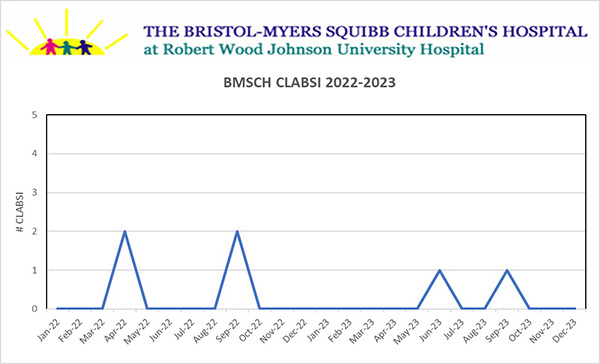Preventing and Reporting Central Line-Associated Bloodstream Infections
What is a central line?
A central line (also called a catheter or a central venous catheter) is a thin, flexible tube that is placed in a vein, usually in the neck, chest, arm, or groin. Central lines are used to delivery medications, intravenous (IV) fluids and nutrition, and to take blood samples. With proper care they can remain in place for several weeks or longer.
What is a central line-associated bloodstream infection (CLABSI)?
A CLABSI is an infection that occurs when bacteria (germs) enter the blood through the central line requiring treatment with antibiotics. These infections also increase the chances that the central line will not work properly, requiring additional IV access and increased length of hospital stay.
How do we keep your child safe from CLABSIs?
We outlined a care process that was successful in reducing the number of infections by over 80% by the end of 2016. This process includes:- Diligent and frequent hand washing, which is an important step in preventing central line infections.
- Consistently placing central lines under sterile conditions.
- Changing central line dressings under the care of two nurses using masks and sterile gloves and gowns.
- Daily CHG (antiseptic) wipe treatment for children over two months of age while they have a central line.
- Review of the need for a central line by your medical team on a daily basis and immediate removal once it is no longer needed.




